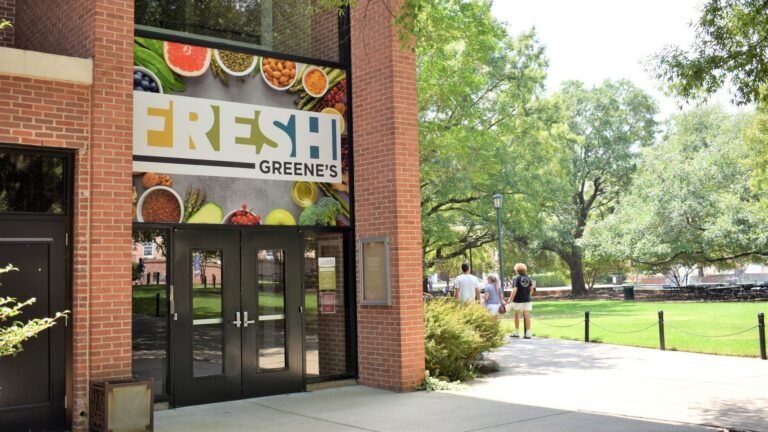Ask your target college early for a course review and look into formal transfer agreements between schools.
Admissions offices have made the transfer process easier and more transparent.
Key Takeaways
- Colleges are making transfers easier and more transparent.
- Consult an adviser early if you’re considering a transfer.
- Articulation agreements between colleges can smooth the path.
There are two major misconceptions about transferring from one college to another, according to admissions experts. The first is that the process is too complicated to be worthwhile. The second is that highly selective colleges don’t even accept transfer students.
While it used to be more complicated to transfer from one university to another, admissions offices have worked to make the process easier and more transparent.
From tools that allow students to figure out what courses they need to transfer, to advising services aimed directly at potential transfer students, the process of transferring credits from other schools is robust at most four-year institutions – partly because attracting transfer students has become a major priority for many colleges.
Some highly selective universities accept high numbers of transfers. The 10-campus University of California system, for example, aims to accept one transfer student for every two accepted freshmen. Transfer students at UC, Davis made up almost a third of incoming freshmen in 2023.
“There’s a whole operation behind the scenes to limit the snags and difficulties of transferring credits,” says Robert Penman, the school’s executive director for undergraduate admissions. “I can tell students, ‘If you take this class and get this GPA, you are guaranteed acceptance.’”
The best advice for anybody thinking about transferring is to speak with an adviser at the school you want to attend as early as possible, Penman says. While colleges have streamlined the process of transferring credits, there are some potential complications that good advising can help prevent.
Ask Early for a Course Review
It’s perfectly fine to ask a college to review courses for equivalency before you’ve even applied. Many schools will review an unofficial transcript and guide gaps, courses that won’t count, or unmet requirements.
“I want a student to have the whole story before they make a decision,” says Taylor Hough, director of admissions at the New England Institute of Technology in Rhode Island. Almost 40% of the school’s student body is transfer students, Hough says.
Having someone look at your transcript early could flag a transfer student’s worst fear: courses already taken that don’t count for transfer credit. Sometimes this is because there are different forms of course accreditation, says Matthew Lopez, deputy vice president for academic enterprise enrollment and executive director of admission services at Arizona State University.
Institutional credits meet the university’s graduation requirements. Specialized credits meet department, program, or major requirements. Also, some for-profit or religiously affiliated college credits may not be accepted at other institutions.
“It’s always a good idea, if you go to a school and know you want to transfer, to ask what is the accreditation of the school you’re going to and then ask the school you want to transfer to if they recognize it,” Lopez says.
Look Into Advising Agreements Between Colleges
Some states offer online tools to smooth the path for transfer students. In California, assist.org was designed to help students transfer between California community colleges and the California State University and UC systems. Similar tools, which typically note articulation agreements, exist in Massachusetts, Washington, and Michigan.
Tools like these allow students to explore the transfer requirements of four-year universities and find course equivalents at community colleges or other institutions. Some focus on public institutions within a particular state, but other initiatives cross state lines.
Arizona State University, where nearly 80% of online and Phoenix-based freshmen this fall are transfer students, uses the online tool MyPath2ASU to help students at schools across the country see what classes they should take at their home institution to meet major requirements and transfer credit to ASU.
“For many years, a transfer student at a four-year university was the forgotten student,” Lopez says. “The thinking was, ‘Well, you didn’t choose us at first, so find your way through it.’”
Universities historically made transferring difficult, Lopez says, but that has changed.
“ASU has been much more thoughtful about student experiences,” he says. “We’re trying to help solve some of the issues we helped create.”
One way ASU has made the credit transfer process more transparent is by publicly posting every course ASU has evaluated for receiving equivalency, Lopez says.
So far, 1.2 million courses offered at other institutions in the U.S. and abroad have been evaluated and posted to the school’s course transfer guide. Interested transfer students can use the online tool to find out whether ASU will accept the courses they’ve taken or are taking somewhere else.
The school is also designing a tool to help students figure out which degree they could get from ASU in the least amount of time using credits they already have, Lopez says.
His advice: Find out if the school you’re attending now has an advising agreement with the school you want to go to. If they do, then there will be advisers who know each school’s course offerings well and can help you lay out a path for a smooth transfer.
Impact of Dropout Rates, Paused Degrees
It may be no surprise that universities are making it easier to transfer credits. Recent trends led to large numbers of former students with college credit but no degree. The population with some college but no credentials grew during the COVID-19 pandemic, as did the number of undergraduates who dropped out of college.
Following that dip in college attendance, the number of community college students who transferred to four-year institutions went up in 2023.
But some community college students may not consider transferring to a four-year college, Penman says, which is why the UC system has advisers who work directly with students to design a transfer path.
It’s worth the effort because the chances of getting accepted are much better as a transfer student, he says. UC, Davis accepts about 40% of first-year applicants but closer to 65% of transfer students. As long as the credits are lower-division, there’s no such thing as too many transfer credits, he says.
“Some students weren’t thinking of transferring, or weren’t thinking of UC,” he says. “Our goal is to increase the number of first-generation, low-income, and underrepresented students and see the transfer rates improve more broadly.”




















Leave a Reply